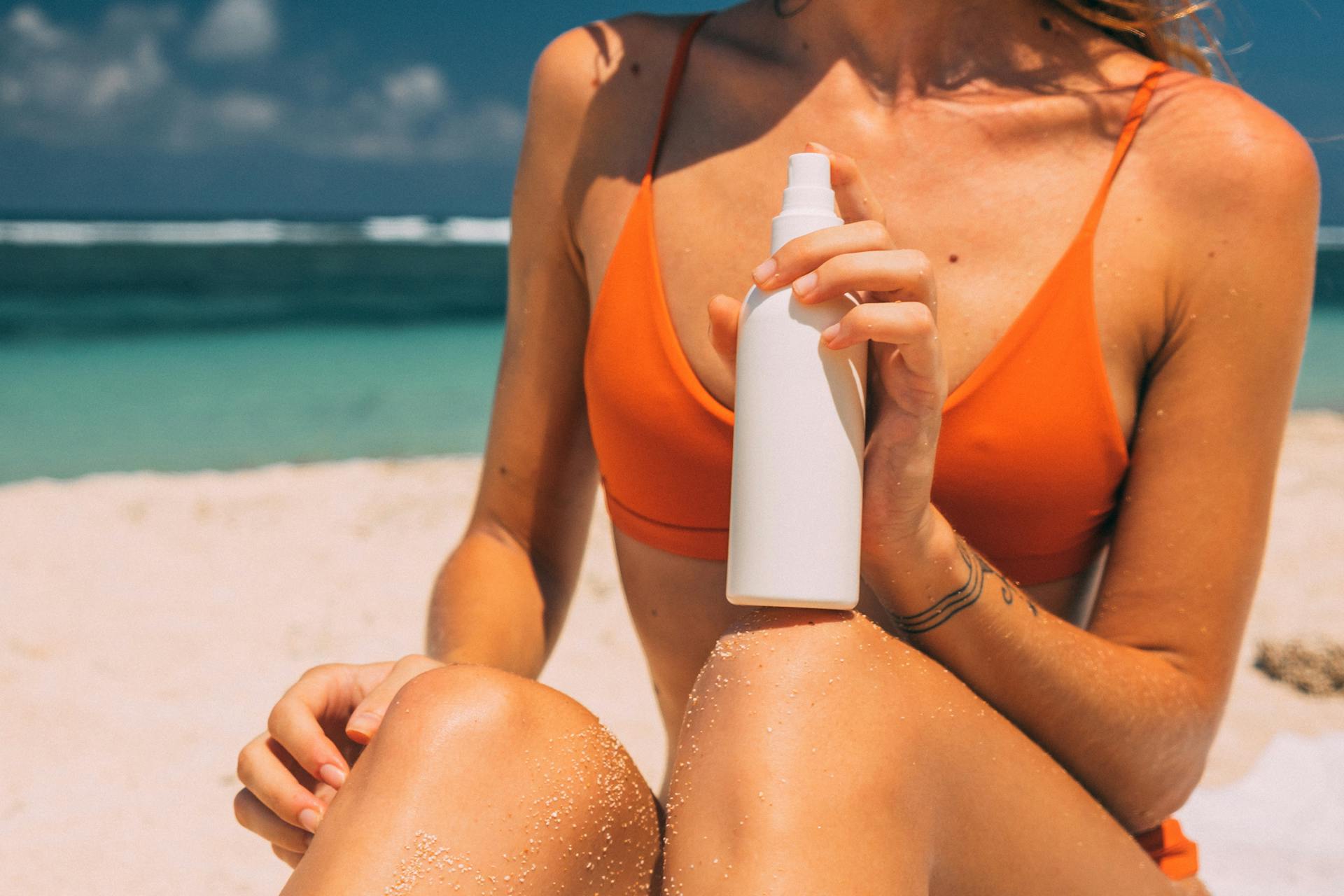
Menu






Are you curious about how to make your own sunscreen at home?
We explore the importance of sunscreen, how it protects the skin, the different types of sunscreen available, and the ingredients needed to make sunscreen at home.
We also discuss the safety of homemade sunscreen and possible side effects, as well as provide tips on how to store it properly.
Get ready to learn all about homemade sunscreen and how to protect your skin from the sun’s harmful rays.
Sunscreen is a topical product that helps protect the skin from the harmful effects of the sun’s ultraviolet (UV) rays by absorbing or reflecting the radiation.
By creating a barrier between the skin and UV rays, sunscreen plays a crucial role in preventing sunburn, premature skin aging, and skin cancer. The Sun Protection Factor (SPF) in sunscreen indicates how long the product will protect the skin from sunburn. Applying a broad-spectrum sunscreen with a high SPF not only shields against sunburn but also lowers the risk of developing skin cancers. The Food and Drug Administration (FDA) recommends using sunscreen daily, regardless of the weather, as UV rays can penetrate through clouds and windows, causing cumulative skin damage.
Sunscreen is essential for maintaining skin health as it provides a shield against harmful UV rays that can cause sunburn, premature aging, and skin cancer.
Applying sunscreen with a minimum SPF of 30 helps to prevent sun damage and maintain youthful skin. Experts recommend applying sunscreen every day, even on cloudy days in California, as UV rays can still penetrate through clouds. Plus SPF protection, some sunscreens contain nourishing essential oils that provide additional benefits like hydration and antioxidant properties.
Sunscreen protects the skin by either absorbing, reflecting, or scattering the UV rays before they can penetrate the skin and cause damage at the cellular level.
One of the key components of sunscreen that aids in this protection is zinc oxide, which works by physically blocking and scattering the UV rays, acting as a barrier on the skin’s surface. By doing so, zinc oxide helps prevent sunburn and other forms of sun damage. In addition, certain sunscreens contain nourishing ingredients like avocado oil that provide added benefits, such as hydration and antioxidant protection for the skin. The SPF rating of sunscreen determines the level of protection it offers against UVB rays, with higher SPF values indicating greater protection from sunburn and skin damage.
Sunscreen contains a variety of ingredients such as zinc oxide, SPF agents, and natural oils that work together to provide protection against UV rays and nourishment for the skin.
Zinc oxide is a key component in sunscreen that creates a physical barrier on the skin, reflecting and scattering harmful UV rays. It is particularly effective in blocking both UVA and UVB rays, making it a crucial ingredient in sun protection products. The SPF agents in sunscreen help determine the level of protection against UVB rays, indicating how long your skin can be exposed to the sun without burning. Natural oils like avocado oil and shea butter are rich in antioxidants and essential fatty acids, providing hydration and nourishment to keep the skin healthy and supple.
The active ingredients in sunscreen formulations are compounds approved by regulatory bodies like the FDA for their efficacy in UV protection, such as zinc oxide and titanium dioxide.
These ingredients work by either physically blocking or chemically absorbing the harmful UV rays from the sun, providing a shield for the skin. Other popular active components like raspberry seed oil and vitamin E oil also offer additional benefits such as antioxidant properties and moisturizing effects.
It’s crucial to choose sunscreens that contain FDA-approved ingredients to ensure maximum protection and safety for your skin. By opting for products with reputable components, you can safeguard your skin against sun damage and premature aging, promoting overall skin health.
Sunscreen comes in various types, including physical and chemical formulations, each offering unique mechanisms of UV protection and skin care benefits.
Physical sunscreens form a protective barrier on the skin, reflecting and scattering harmful UV rays like a shield. These sunscreens typically contain ingredients like zinc oxide or titanium dioxide, which are considered gentle on the skin and less likely to cause irritation.
On the other hand, chemical sunscreens work by absorbing UV rays and converting them into heat, which is then released from the skin. They often include compounds such as avobenzone or oxybenzone, which can be more lightweight and easier to apply.
Physical sunscreen creates a barrier on the skin that reflects and scatters UV rays, primarily utilizing mineral ingredients like zinc oxide to provide broad-spectrum protection.
This unique characteristic of physical sunscreen sets it apart from chemical sunscreens, which work by absorbing UV rays into the skin. Zinc oxide, a key mineral in physical sunscreens, forms a protective barrier on the skin’s surface, acting as a shield against harmful UVA and UVB rays. This barrier reflects and scatters the UV radiation away from the skin, preventing it from penetrating and causing damage.
Chemical sunscreen absorbs UV radiation through a chemical reaction on the skin, offering effective protection against sun damage and often containing ingredients like avobenzone and oxybenzone.
Avobenzone works by absorbing a broad spectrum of UVA rays, while oxybenzone absorbs UVB rays. These components play a crucial role in shielding the skin from harmful UV radiation, preventing sunburn and premature aging. Chemical sunscreens may also include nourishing elements such as olive oil and carrot seed oil. These essential oils not only hydrate and soften the skin but also provide antioxidant properties that help combat free radicals, promoting overall skin health and radiance.
Creating homemade sunscreen allows you to customize the ingredients and tailor the product to your skin’s specific needs, using natural components like essential oils and zinc oxide.
Begin by gathering the essential ingredients for your homemade sunscreen. You will need shea butter, beeswax, raspberry seed oil, and zinc oxide as the base components.
Shea butter, known for its moisturizing properties, helps to keep your skin hydrated while providing a natural SPF. Beeswax acts as a natural emulsifier, ensuring that all ingredients blend well together. Raspberry seed oil, rich in antioxidants, helps protect your skin from harmful UV rays. Zinc oxide, a mineral sunscreen agent approved by authorities like the London-based MHRA, offers broad-spectrum protection.
Following a simple recipe and carefully measuring each ingredient, combine them to create a safe and effective homemade sunscreen.”
The ingredients required to make homemade sunscreen include natural oils like avocado oil and shea butter, along with protective agents such as zinc oxide for UV defense and skin nourishment.
Avocado oil is rich in antioxidants and essential fatty acids, providing moisturizing and anti-inflammatory benefits to the skin. Shea butter is known for its nourishing and soothing properties, aiding in skin repair and maintaining moisture balance.
Regarding UV protection, zinc oxide acts as a physical barrier that reflects and scatters harmful UVA and UVB rays, effectively shielding the skin from sun damage. Incorporating vanilla extract can add a subtle fragrance to your homemade sunscreen, enhancing the sensorial experience of application.
Companies like Bend Soap Company offer high-quality ingredients that can be used in DIY skincare formulations, ensuring the effectiveness and safety of your homemade products.
To prepare homemade sunscreen, start by melting beeswax and combining it with coconut oil, essential oils, and zinc oxide, then pour the mixture into containers for cooling and use.
Once the beeswax has melted, slowly stir in the coconut oil until fully blended. Adding a few drops of your preferred essential oils can provide a pleasant scent while also offering additional benefits for the skin. Don’t forget to incorporate avocado oil into the mixture for its nourishing properties that help to keep the skin hydrated and protected. After pouring the sunscreen into containers, let it cool and solidify before storing it in a cool, dry place away from direct sunlight to maintain its effectiveness.
The safety of homemade sunscreen depends on the quality of ingredients used and their proper measurements, as DIY formulations may not undergo the same testing and regulation as commercial products approved by the FDA.
When creating your own sunscreen at home, it is crucial to source high-quality ingredients with a known SPF rating to ensure proper sun protection. Ingredient quality plays a significant role in the effectiveness of the sunscreen, as using subpar components may lead to inadequate protection against harmful UV rays. The proportions of each ingredient must be carefully calculated to achieve the desired level of UV protection without risking skin irritation or sunburn.
Potential side effects of homemade sunscreen may include skin irritation, allergic reactions, or reduced UV protection if the formulation lacks proper SPF components or skin-friendly ingredients.
It’s important to note that when using homemade sunscreen, there are risks involved due to the variability in ingredients used and their effectiveness in providing SPF protection.
Adverse reactions such as skin irritation and allergies can occur if individuals are sensitive to specific components in the homemade recipe.
To ensure the efficacy and safety of DIY sun protection, it is essential to do thorough research on natural ingredients like coconut oil, zinc oxide, and shea butter, which offer some level of SPF coverage.
Proper storage of homemade sunscreen is crucial to maintain its efficacy and prevent ingredient degradation, as exposure to heat, light, or moisture can impact the product’s stability and effectiveness.
Regarding preserving DIY sunscreen, choosing the right containers is essential. Opt for opaque or dark glass containers to shield the product from light, which can cause the active ingredients like raspberry seed oil and vitamin E oil to deteriorate. Store the sunscreen in a cool, dark place away from direct sunlight and heat sources to maximize its shelf life. Ensuring the containers are airtight will prevent moisture from seeping in and compromising the formulation over time.
To make sunscreen at home, you will need zinc oxide powder, coconut oil, shea butter, beeswax, and your choice of essential oils for added scent.
No, zinc oxide powder is the key ingredient in sunscreen that provides protection against harmful UV rays. It is essential to include it in your homemade sunscreen recipe.
First, melt the shea butter and beeswax in a double boiler. Once melted, add in coconut oil and mix well. Next, slowly add in zinc oxide powder while stirring continuously. Finish by adding in your choice of essential oils and mixing well.
The SPF level of homemade sunscreen varies depending on the amount of zinc oxide powder used. Generally, adding 20% zinc oxide powder will result in an SPF of around 30.
Homemade sunscreen should be stored in a cool, dry place, away from direct sunlight. It is best to use a dark, airtight container to extend its shelf life.
Yes, as long as you use high-quality ingredients and follow a trusted recipe, homemade sunscreen can be just as effective and safe to use as store-bought options. However, it is always recommended to do a patch test first to ensure no allergic reactions occur.

Discover insights and guidance on detoxification, nutrition, and overall wellness. Elevate your health journey with our expertly curated articles and empower yourself to make informed decisions for a healthier lifestyle.
Lorem ipsum dolor sit amet, consectetur adipiscing elit, sed do eiusmod tempor incididunt ut labore et dolore magna aliqua.



Subscribe to our newsletter and we’ll send you the emails of latest posts.
Copyright © 2024 Detox Diet. All rights reserved.